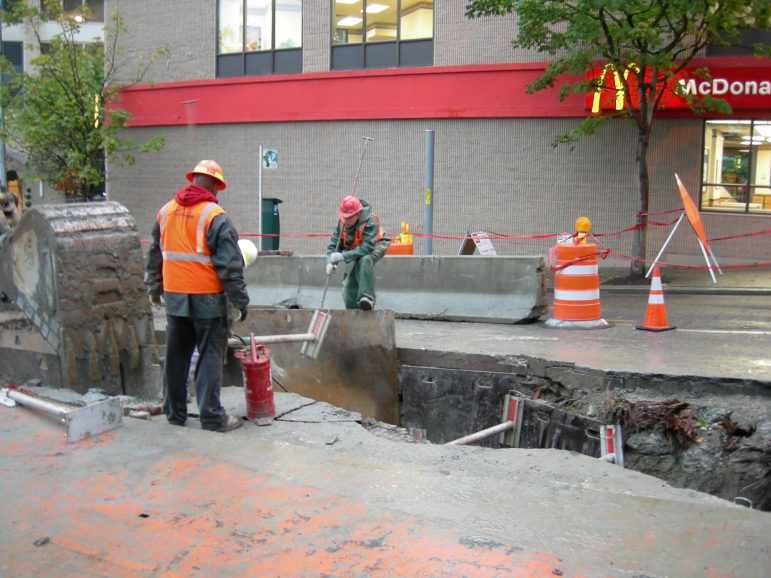The latest monthly unemployment numbers for Alabama are due out Friday. The state’s unemployment rate is down about 2-percent over the last year. While that seems like good news, there was something in the numbers which caught the attention of WBHM’s Andrew Yeager. And he went looking for an explanation.
We know that Alabama’s unemployment rate has been dropping. But there’s another number that part of calculating the unemployment rate. It’s called the labor force. Officially it’s the number of people with jobs plus the number of unemployed people who looked for work in the last month. It’s as if the labor force is the entire statewide team employers can draw on to build cars, teach in schools or build buildings. But people are leaving the team.

“There’s something there that’s a little bit disturbing. That’s not how you want to lower your unemployment rate.”
She says we know recessions can cause people to retire or go back to school. Also unemployed workers become discouraged and just stop looking for work. But we don’t really have good data to figure out specifically what’s driving Alabama.
“All these numbers are calculated on different calendars and by different agencies. We can look at these raw numbers and we can hypothesize about what’s going on [but] it’s actually incredibly difficult to get to the heart of the matter in real time. That’s frustrating as an economist and I’m sure as a reporter.’
Helms hesitates to provide a specific explanation to the fact Alabama is behaving differently from the other southeastern states. She says though it’s important to note the country as a whole saw its labor force plummet in the recession and all the southeast states are in this kind of historically low range. So for Alabama, maybe it has something to do with the state’s immigration law. Although that’s a big maybe. Maybe having the state’s largest county in municipal bankruptcy is dragging things down. But that’s a big maybe.
“I’m a good economist. I have six hands and on the one hand and on the other and on the other.”
So for another hand here’s Ahmad Ijaz, an economist at the University of Alabama.
“It’s because of a combination of different factors.”
He points to the same ideas — retirees, people going back to school and discouraged workers. But again this is from the national picture. Ijaz says maybe people are relocating to other southeastern states and that’s why their labor forces are trending upward, but we won’t know for sure for a couple of years. He does point out states’ economies are structured differently and that affects how the numbers move.
“For example, Florida is very heavy into services type jobs. And services is one of the sectors which is adding jobs. Whereas Alabama has a lot more manufacturing jobs.”
So we’re kind of in a situation where we can see the forest but we can’t see the trees very clearly. What do the people in state government think — the people who talk about bringing jobs to Alabama?
Tom Surtees is director of the Alabama Department of Industrial Relations. He says the shrinking labor force is concerning, but not unexpected. Still he says every Alabamian should have the chance to get a job. And the state is trying to create the opportunity.
“We’re working every day bringing in, working with employers possible employers, existing employers to bring jobs to Alabama. And as jobs come in people will come into the state with them, so we will see a growth in our workforce.”
Surtees says Alabama is coming out of the recession faster than surrounding states and that’s true if you look at the unemployment rate. But he acknowledges that’s not the case if you look at the actual number of people employed or looking for work. So this whole fixation on labor force, does it even matter then if the unemployment rate is dropping.
“Well, you could have an unemployment rate of zero if no one is looking for a job.”
Oakworth Capital Bank economist John Norris says a shrinking labor force generally means fewer people earning paychecks.
“That’s ordinarily not in the recipe for vibrant economic growth. [And] That’s a real problem. Yes, it’s great the unemployment rate has fallen but at the same time we want to make sure the number of employed keeps on going up and right now we’re not really seeing that.”
The number of employed…a new number to puzzle over.

